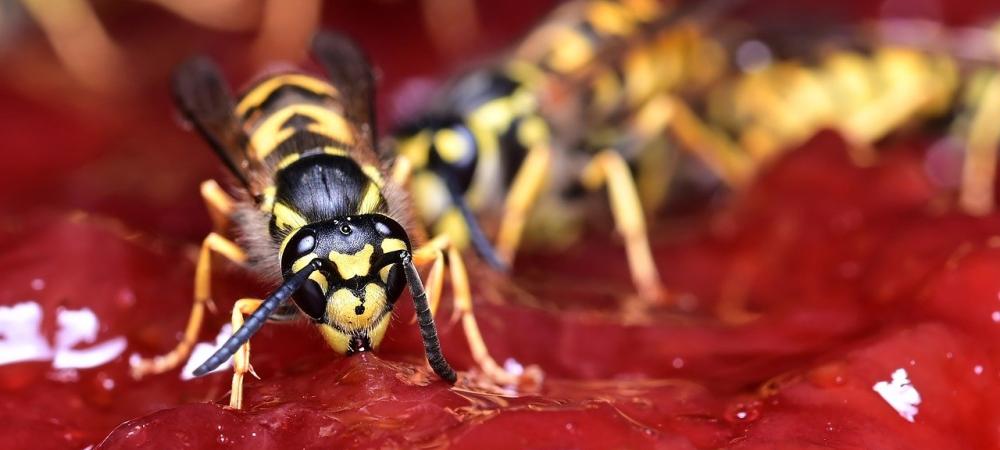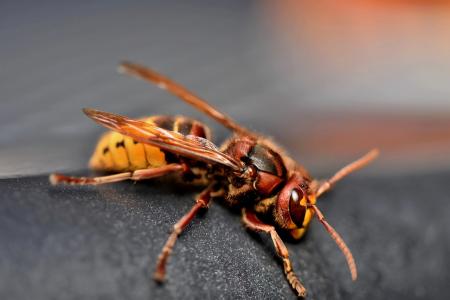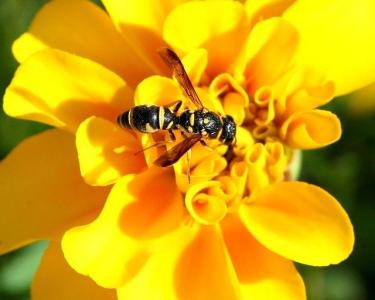How to Identify Hornets vs. Wasps

Stinging insects can be a major nuisance for homeowners, especially during warmer months. Two of the most commonly confused culprits are hornets and wasps. While both belong to the same family (Vespidae) and can deliver painful stings, they have distinct differences that can help you identify them and take appropriate action. In this guide, we break down the physical traits, behaviors, and nesting habits of hornets vs. wasps to help you better understand what you might be dealing with in your yard.
What Are Hornets?

Hornets are a type of large wasp known for their size, aggressive behavior, and potent stings. In the U.S., the most common hornet species is the European hornet (Vespa crabro), which was introduced from Europe. Hornets are social insects that live in colonies and can be highly defensive of their nests.
Key Traits:
- Hornets are typically larger than other wasps, growing up to 1.5 inches in length.
- They have a more robust and thick-bodied appearance, with a brownish-red coloration and yellow stripes on the abdomen.
- Their wings are reddish-brown and their heads are wider in proportion to their bodies.
- When flying, they produce a louder and lower-pitched buzzing sound than smaller wasps.
What Are Wasps?

Wasps are a broader category of stinging insects that includes many species such as yellow jackets and paper wasps. While hornets fall under the wasp category, the term "wasp" is commonly used to describe the smaller, more slender-bodied varieties.
Key Traits:
- Wasps usually measure between 0.5 and 1 inch in length.
- Their bodies are slimmer and more elongated, with a noticeable “waist” between the thorax and abdomen.
- Coloration is typically bright yellow and black, though paper wasps may have reddish-brown tones.
- Their wings are more translucent and they produce a higher-pitched, zippier buzzing noise when flying.
Key Physical Differences Between Hornets and Wasps
When trying to tell the difference, size and body shape are the most obvious indicators. Hornets are significantly larger and more heavily built, while wasps are generally smaller and more streamlined. Hornets tend to have more muted, darker colors like reddish-brown and dull yellow, whereas wasps often feature bold, bright yellow and black patterns that are easy to spot.
In addition, hornets have a more rounded abdomen and broader head, while wasps have a pinched waist and an overall more angular appearance. If you see a large, intimidating insect flying with a deep, droning buzz, it's likely a hornet. If the insect is smaller, faster-moving, and has a high-pitched buzz, it’s probably a wasp.
Behavioral Differences
- Hornets are known for being highly territorial and aggressive, especially when their nest is disturbed. They are capable of stinging multiple times, and when threatened, they release pheromones that signal other hornets to join in the attack. This can result in a dangerous swarm response.
- Wasps can also be aggressive, particularly certain species like yellow jackets. In general, paper wasps are less likely to sting unless directly provoked. However, yellow jackets are very protective of their nests and are known to chase intruders over long distances. They’re also more likely to be attracted to sugary foods and garbage, making them a frequent pest at outdoor events and picnics.
Quick Tip: Wasps (especially yellow jackets) are more likely than hornets to hover around food, trash cans, and sugary drinks. Hornets are more focused on their nests and less likely to forage around humans unless provoked.
How to Identify Their Nests
Recognizing the type of nest can be one of the most effective ways to determine whether you’re dealing with hornets or wasps.
Hornet Nests:
- Hornet nests are typically large and oval or football-shaped.
- They are often suspended from trees, bushes, or the eaves of buildings.
- The nest is enclosed with a papery outer shell made from chewed wood and saliva, giving it a grayish, weathered appearance.
- You won’t see the individual cells from the outside; instead, the nest looks like a solid structure.
Wasp Nests:
- Paper wasps build small, open nests that resemble upside-down umbrellas.
- These nests are usually attached to horizontal surfaces like roof overhangs, window frames, or porch ceilings.
- The nest structure is exposed, and you can see the individual hexagonal cells.
- Yellow jackets often build concealed nests underground, in wall voids, or in hollow logs. These are typically enclosed and hard to spot until disturbed.
Learn how to prevent wasp nests.
Professional Stinging Insect Control
Whether you’re dealing with hornets, yellow jackets, or paper wasps, attempting to remove a nest on your own can be dangerous. These insects can become highly aggressive if they feel threatened, and multiple stings can lead to serious allergic reactions.
At Pest-X, our trained technicians have the experience and equipment needed to safely identify and remove nests, helping protect your home and family from painful stings. Our stinging insect control offers safe, effective methods to eliminate infestations and prevent them from returning.
Don’t take the risk. If you see stinging insects or discover a nest around your property, contact Pest-X today for fast, reliable service.
